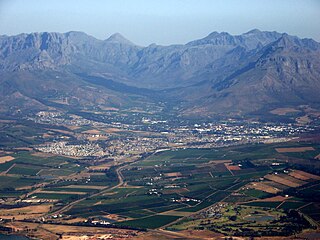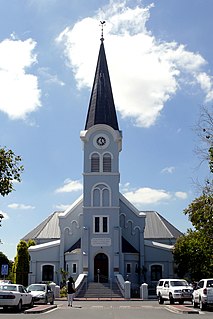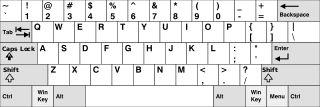
Afrikaans is a West Germanic language spoken in South Africa, Namibia and, to a lesser extent, Botswana and Zimbabwe. It evolved from the Dutch vernacular of Holland spoken by the largely Dutch settlers in the south-west of what is now South Africa, where it gradually began to develop distinguishing characteristics in the course of the 18th century. Hence, it is a daughter language of Dutch.

Boer is Dutch and Afrikaans for "farmer". In South African contexts, "Boers" refers to the descendants of the proto-Afrikaans-speaking settlers of the eastern Cape frontier in Southern Africa during the 18th and much of the 19th century. From 1652 to 1795 the Dutch East India Company controlled this area, but the United Kingdom incorporated it into the British Empire in 1806.

Herman Charles Bosman is widely regarded as South Africa's greatest short-story writer. He studied the works of Edgar Allan Poe and Mark Twain and developed a style emphasizing the use of satire. His English-language works utilize primarily Afrikaner characters and highlight the many contradictions in Afrikaner society during the first half of the twentieth century.

South African English is the set of English dialects native to South Africans.

In Southern Africa, Cape Coloureds are an ethnic group composed primarily of persons of mixed race. Although Cape Coloureds form a minority group within South Africa, they are the predominant population group in the Western Cape.

The Great Trek was an eastward migration of Dutch-speaking settlers who travelled by wagon trains from the Cape Colony into the interior of modern South Africa from 1836 onwards, seeking to live beyond the Cape’s British colonial administration. The Great Trek resulted from the culmination of tensions between rural descendants of the Cape's original European settlers, known collectively as Boers, and the British Empire. It was also reflective of an increasingly common trend among individual Boer communities to pursue an isolationist and semi-nomadic lifestyle away from the developing administrative complexities in Cape Town. Boers who took part in the Great Trek identified themselves as voortrekkers, meaning "pioneers", "pathfinders" in Dutch and Afrikaans.

Stellenbosch is a town in the Western Cape province of South Africa, situated about 50 kilometres east of Cape Town, along the banks of the Eerste River at the foot of the Stellenbosch Mountain. It is the second oldest European settlement in the province, after Cape Town. The town became known as the City of Oaks or Eikestad in Afrikaans and Dutch due to the large number of oak trees that were planted by its founder, Simon van der Stel, to grace the streets and homesteads.
Cape Dutch, also commonly known as Cape Afrikaners, were a historic socioeconomic class of Afrikaners who lived in the Western Cape during the eighteenth and nineteenth centuries. The terms have been evoked to describe an affluent, apolitical section of the Cape Colony's Afrikaner population which did not participate in the Great Trek or the subsequent founding of the Boer republics. Today, the Cape Dutch are credited with helping shape and a promote a unique Afrikaner cultural identity through their formation of civic associations such as the Afrikaner Bond, and promotion of the Afrikaans language.
Bosman is a Dutch and Afrikaans toponymic surname, originally meaning "man who lives or works in the forest". People with this surname include:

At least thirty-five languages indigenous to South Africa are spoken in the Republic, ten of which are official languages of South Africa: Ndebele, Northern Sotho, Sotho, SiSwati, Tsonga, Tswana, Venda, Xhosa, Zulu and Afrikaans. The eleventh official language is South African English, which is the primary language used in parliamentary and state discourse, though all official languages are equal in legal status, and unofficial languages are protected under the Constitution of South Africa, though few are mentioned by any name. South African Sign Language has legal recognition but is not an official language, despite a campaign and parliamentary recommendation for it to be declared one.
Kaffir is a racist slur used to refer to an individual of Nguni ancestry. In the form of cafri, it evolved during the pre-colonial period as an equivalent of "negro". In Southern Africa, the term was later used to refer to the Bantu peoples. This designation came to be considered a pejorative by the mid-20th century.
The poetry of South Africa covers a broad range of themes, forms and styles. This article discusses the context that contemporary poets have come from and identifies the major poets of South Africa, their works and influence.

Kuils River is a town in the Western Cape, South Africa, 25 km east of Cape Town.
Stephen Gray is a South African writer and critic who was born in Cape Town in 1941. He studied at St. Andrew's College, Grahamstown and later at the University of Cape Town, Cambridge University, England, and the University of Iowa, US. Until 1992, he was Professor of English at the Rand Afrikaans University in Johannesburg.

The Bo-Kaap is an area of Cape Town, South Africa formerly known as the Malay Quarter. It is a former township, situated on the slopes of Signal Hill above the city centre and is a historical centre of Cape Malay culture in Cape Town. The Nurul Islam Mosque, established in 1844, is located in the area.
Roger Ballen is an American artist living in Johannesburg, South Africa, and working in its surrounds since the 1970s. His oeuvre, which spans five decades, began with the documentary photography field but evolved into the creation of distinctive fictionalized realms that also integrate the mediums of film, installation, theatre, sculpture, painting and drawing. Marginalized people, animals, found objects, wires and child-like drawings inhabit the unlocatable worlds presented in Ballen's artworks. Ballen describes his works as existential psychodramas that touch the subconscious mind and evoke the underbelly of the human condition. They aim to break through the repressed thoughts and feelings by engaging him in themes of chaos and order, madness or unruly states of being, the human relationship to the animal world, life and death, universal archetypes of the psyche and experiences of otherness.

Many languages are spoken, or historically have been spoken, in Zimbabwe. Since the adoption of its 2013 Constitution, Zimbabwe has 16 official languages, namely Chewa, Chibarwe, English, Kalanga, Koisan, Nambya, Ndau, Ndebele, Shangani, Shona, sign language, Sotho, Tonga, Tswana, Venda, and Xhosa. The country's main languages are Shona, spoken by roughly 70% of the population, and Ndebele, spoken by roughly 20%. English is the country's lingua franca, used in government and business and as the main medium of instruction in schools. English is the first language of most white Zimbabweans, and is the second language of a majority of black Zimbabweans. Historically, a minority of white Zimbabweans spoke Afrikaans, Greek, Italian, Polish, and Portuguese, among other languages, while Gujarati and Hindi could be found amongst the country's Indian population. Deaf Zimbabweans commonly use one of several varieties of Zimbabwean Sign Language, with some using American Sign Language. Zimbabwean language data is based on estimates, as Zimbabwe has never conducted a census that enumerated people by language.
Afrikaners are a Southern African ethnic group descended from predominantly Dutch settlers first arriving at the Cape of Good Hope in the 17th and 18th centuries. They traditionally dominated South Africa's politics and commercial agricultural sector prior to 1994. Afrikaans, South Africa's third most widely spoken home language, evolved as the mother tongue of Afrikaners and most Cape Coloureds. It originated from the Dutch vernacular of South Holland, incorporating words brought from the Dutch East Indies and Madagascar by slaves. Afrikaners make up approximately 5.2% of the total South African population based on the number of white South Africans who speak Afrikaans as a first language in the South African National Census of 2011.
A Bekkersdal Marathon is anthology of short stories written by Herman Charles Bosman.
The Media24 Books Literary Awards are a group of South African literary prizes awarded annually by Media24, the print-media arm of the South African media company Naspers. They are open to authors whose books are published within the Media24 Books stable, which includes NB Publishers, Jonathan Ball Publishers, LuxVerbi-BM, NVA, and Van Schaik Publishers. The awards were worth R35 000 each in 2013.










